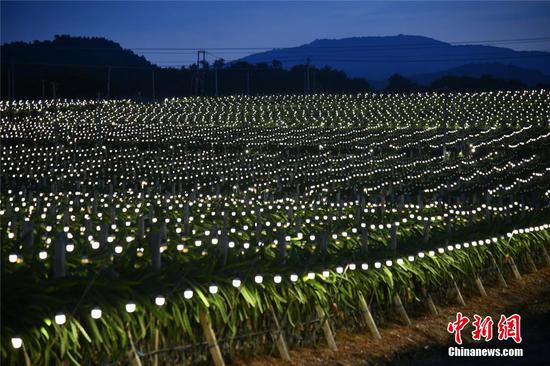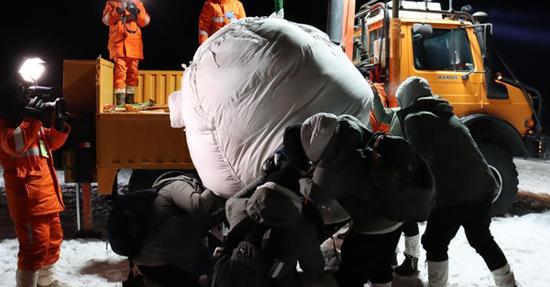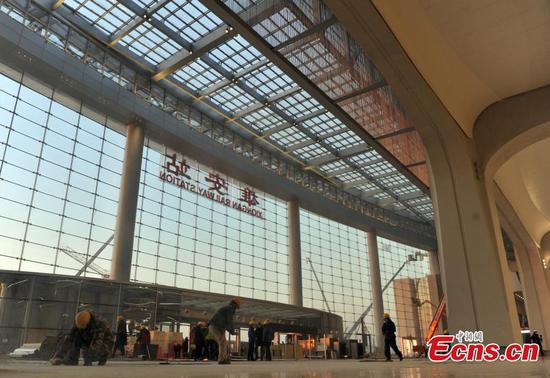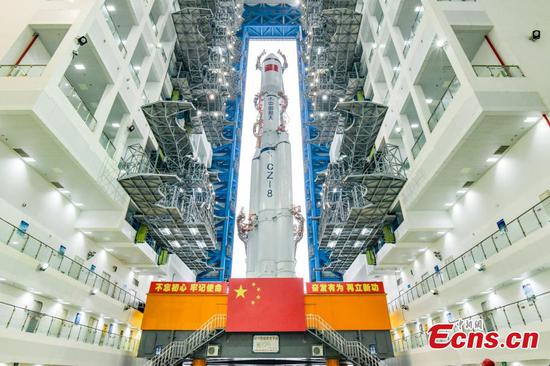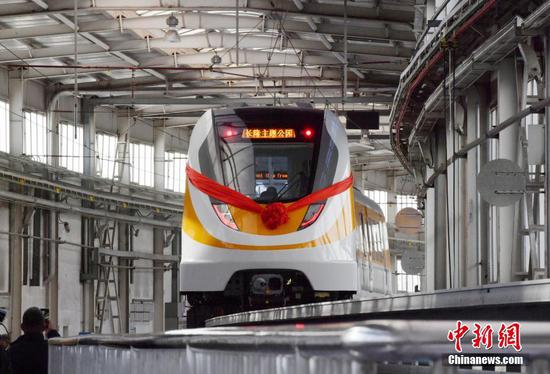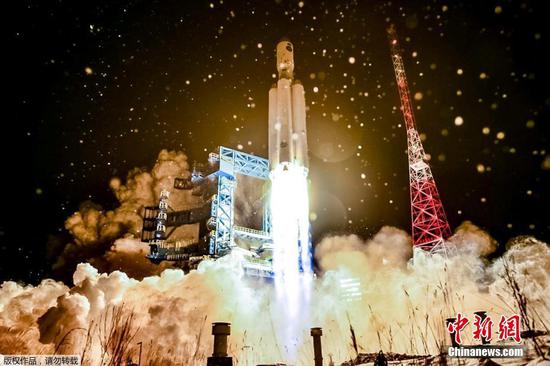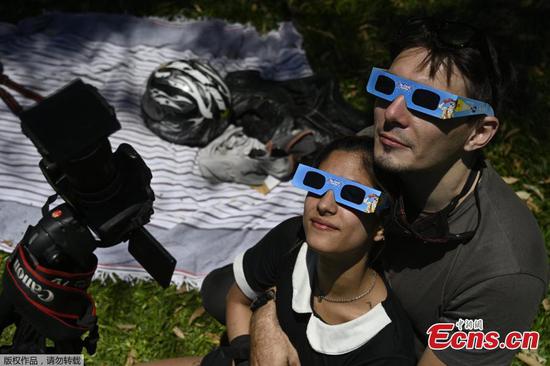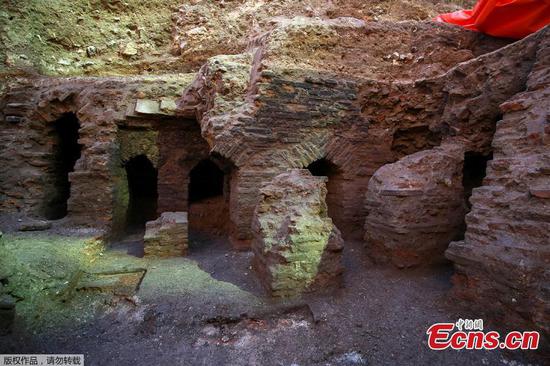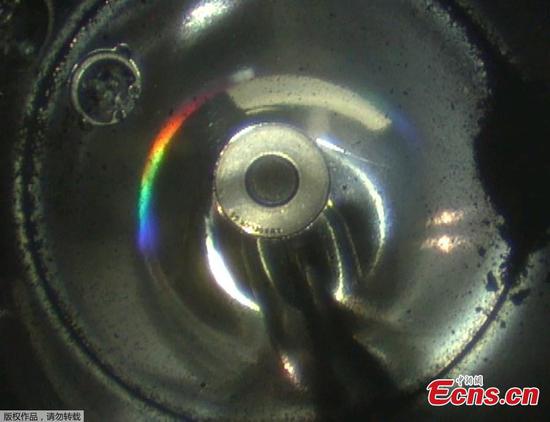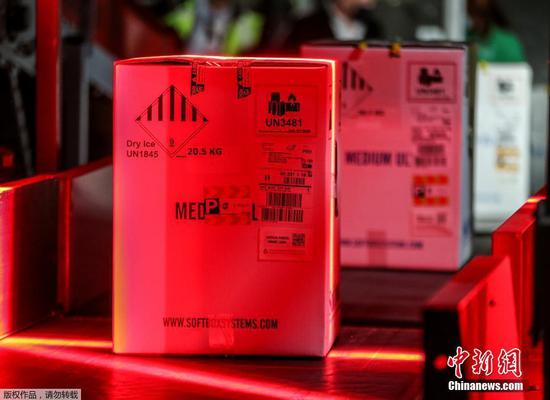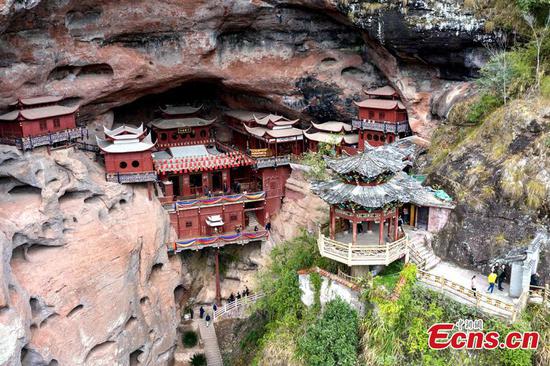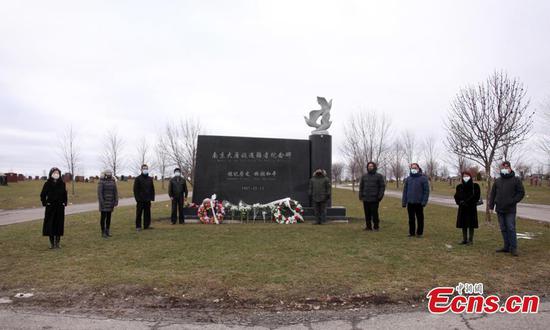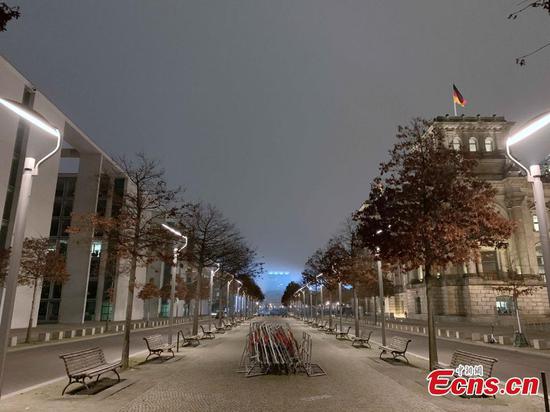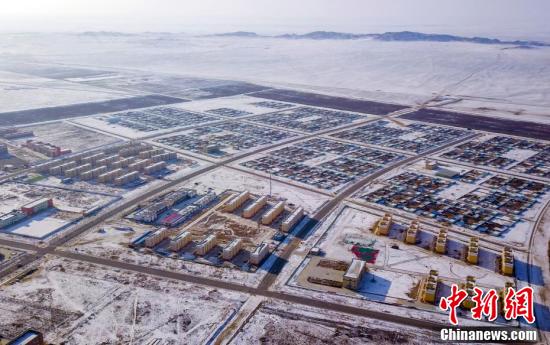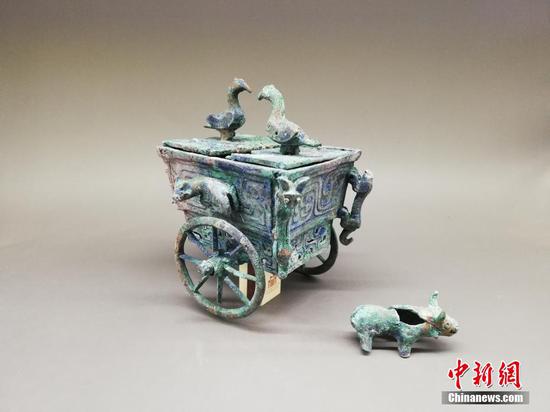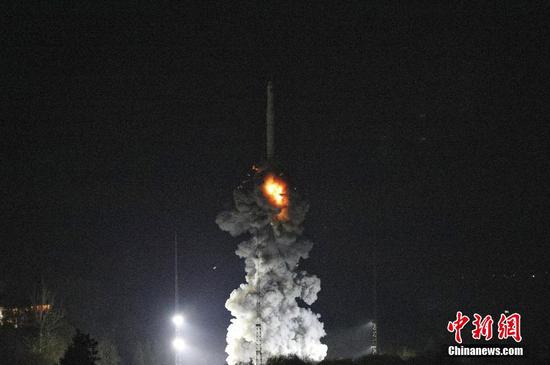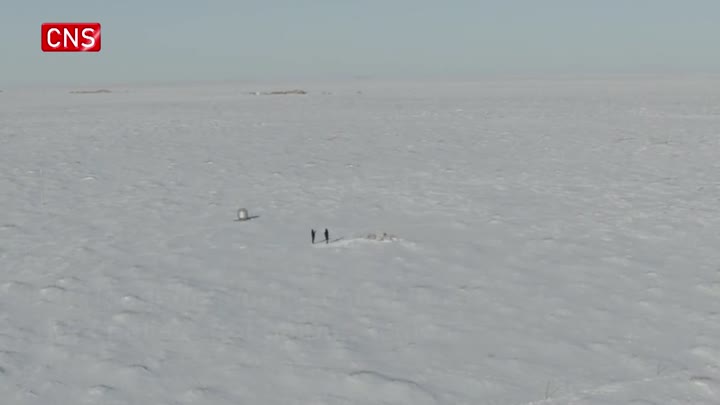
A ceremony is held at a building of China Aerospace Science and Technology Corp, the birthplace of the Chang'e 5, to celebrate the arrival of the probe's reentry capsule in Beijing on Thursday evening. (XU JINGXING/CHINA DAILY)
On Dec 1, the lander-ascender combination landed on the moon, becoming the world's third spacecraft to touch down on the lunar surface this century, after its predecessors-Chang'e 3 and 4.
The landing site was near Mons Ruemker, an isolated volcanic formation located in the Oceanus Procellarum, or the Ocean of Storms, on the western edge of the moon's near side. The area had never been visited before Chang'e 5.
Shortly after landing, the combination began to fulfill its major tasks of using a drill to obtain 500 grams of underground samples and then using a mechanical arm to scoop up 1.5 kg of surface soil.
The collection operations finished on Dec 2, taking about 19 hours, which was much quicker than expected. Samples were packed into a vacuum container inside the ascender.
During the process, the lander also unfurled the first free-standing Chinese national flag on the lunar surface.
The ascender activated an engine on Dec 3 to lift itself into an elliptical lunar orbit to prepare for docking with the reentry capsule, marking the first time a Chinese spacecraft has blasted off from an extraterrestrial body.
It linked up with the orbiting combination on Dec 6 and transferred the lunar samples into the reentry capsule. The ascender separated from the combination later that day and was commanded to impact on the moon on Dec 8.
The combination made two orbital maneuvers over the weekend after traveling in a near-circular lunar orbit for nearly six days. After the maneuvers, the pair entered a moon-Earth transfer trajectory on Sunday and began to fly back toward Earth.
According to the space administration, the Chang'e 5 mission was designated to fulfill several objectives. In terms of space engineering, it should demonstrate and verify technical plans and apparatus for autonomous lunar sampling and packing, moon-based launching as well as lunar orbital docking.
In the scientific context, it was tasked with investigating the landing site's geological and topographic features, and it enabled scientists to analyze lunar samples' structure and physical traits so they can deepen their research into the moon's origins and evolution.
The mission also aimed to help foster the country's knowledge, technology and talent pool for future manned lunar missions and other deep-space expeditions.









